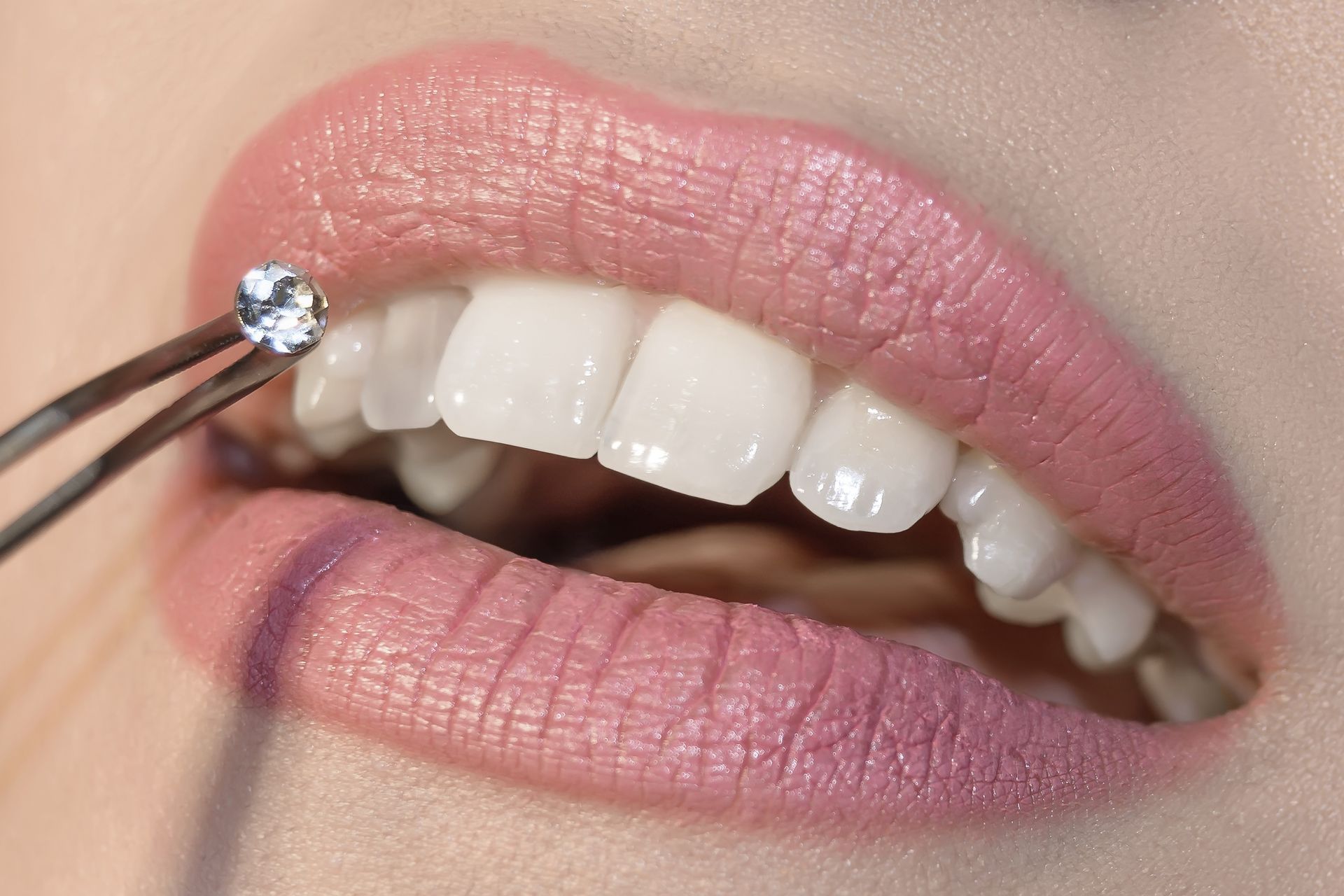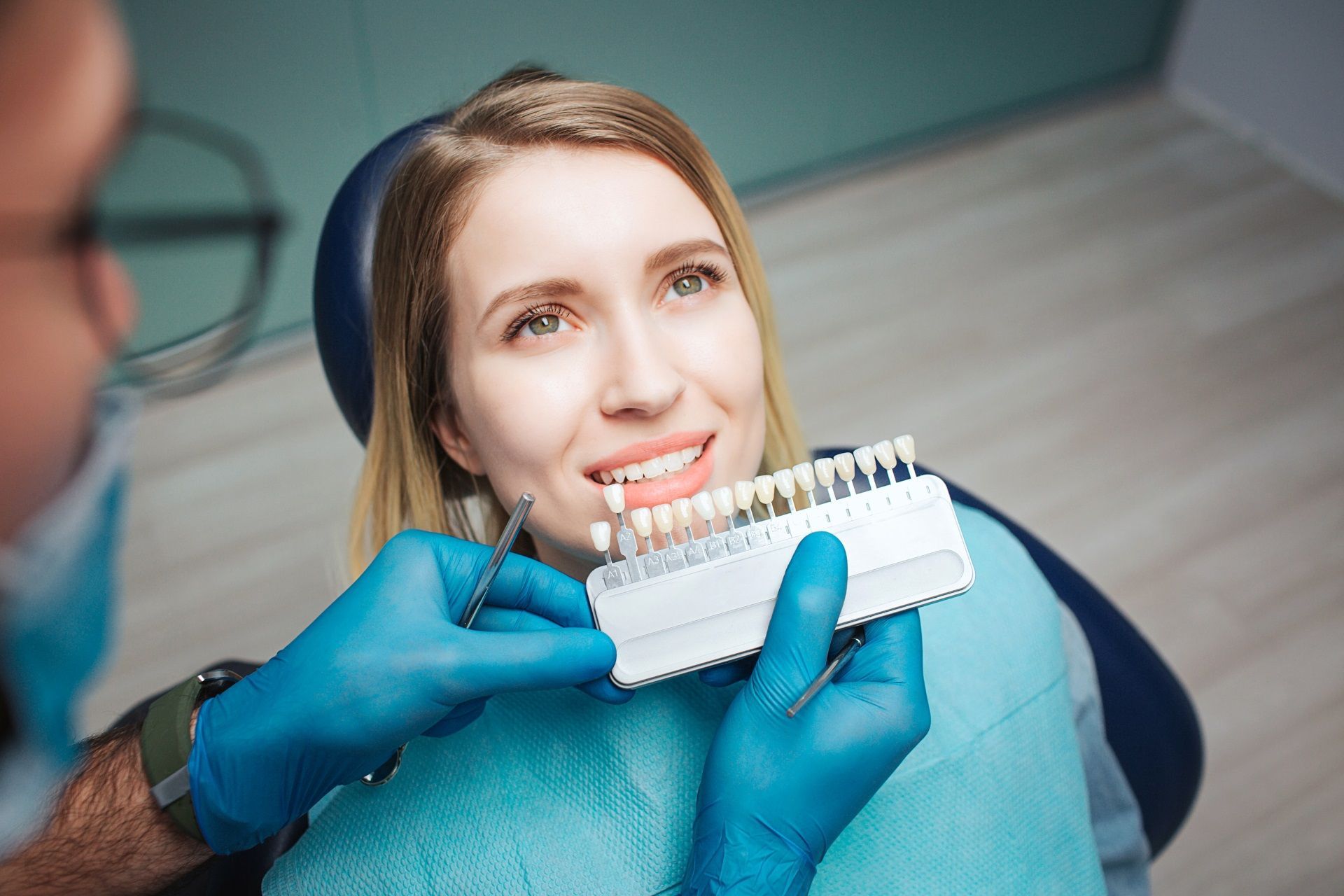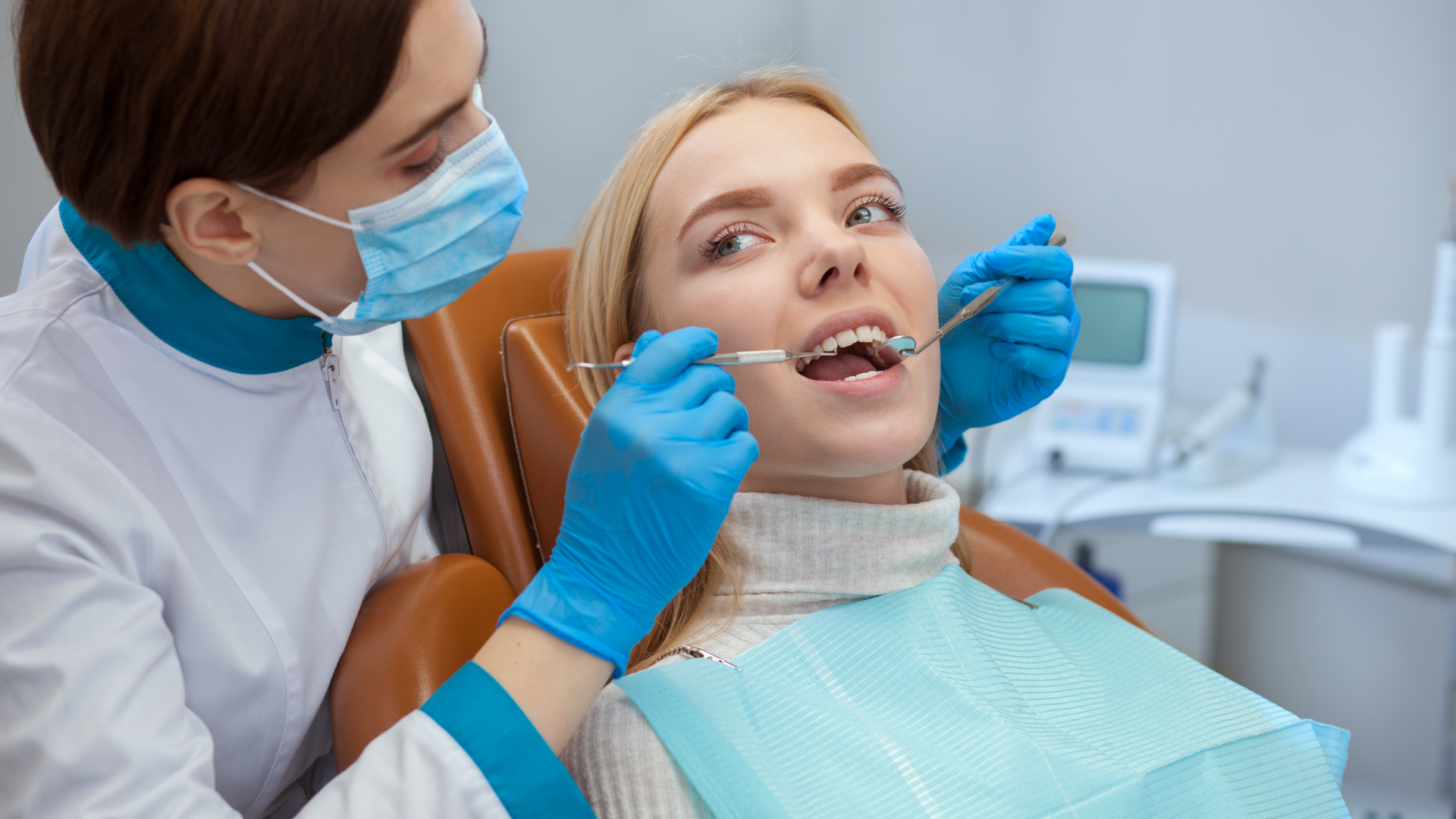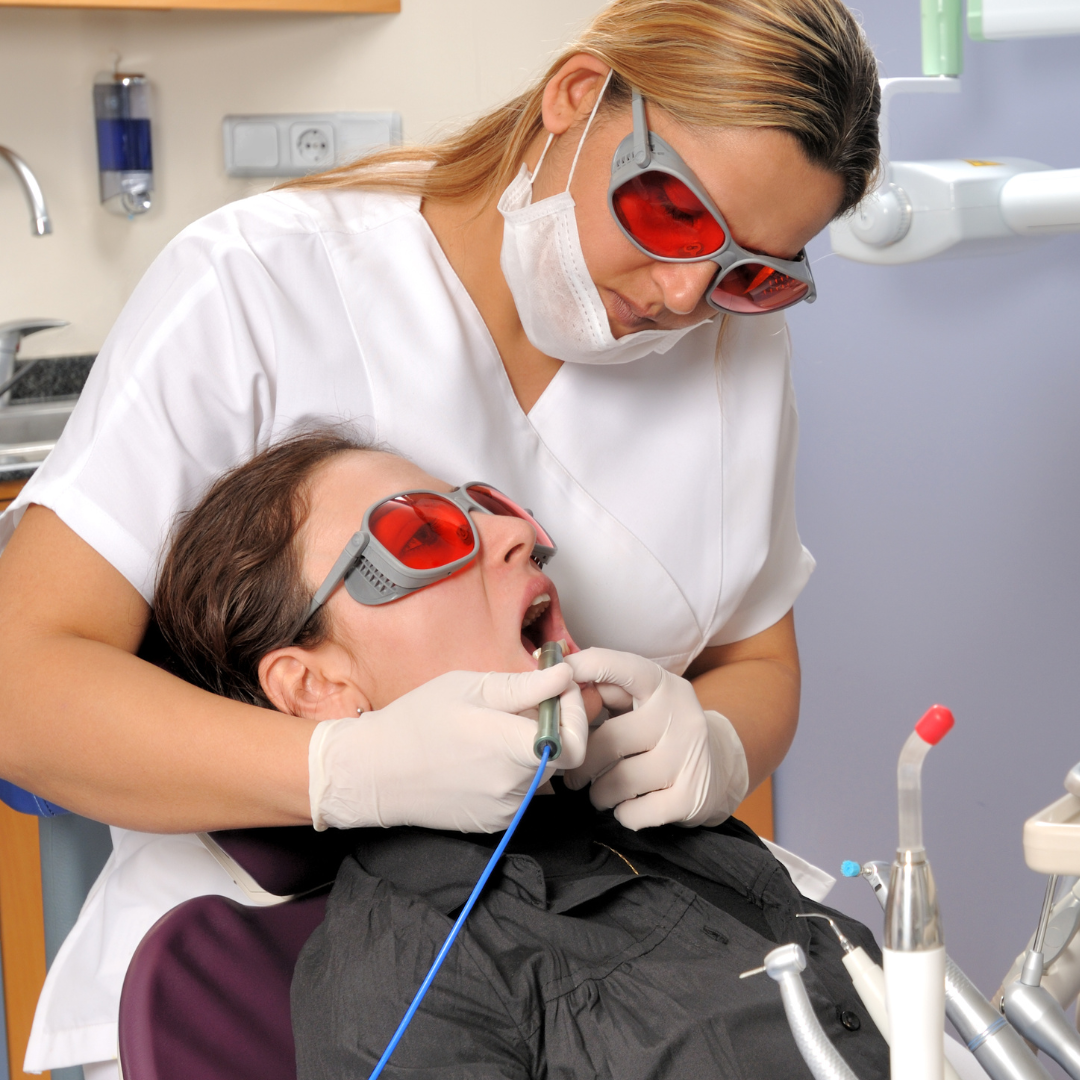How Painful Is Dental Bone Grafting?
Understanding Dental Bone Grafting
The Purpose of Bone Grafting in Dentistry
Dental bone grafting is a procedure aimed at repairing or rebuilding bone through the transplantation of bone tissues. The primary goal is to create a solid foundation for dental implants and ensure the long-term success of these restorations.
The benefits of dental bone grafts are multifaceted:
- This procedure enables significant bone regeneration, particularly in cases where there is extensive bone loss.
- Provide enhanced stability for dental implants, which is crucial for the implants' functionality and durability.
- Contribute to improved aesthetics by maintaining the natural contour of the jaw and face.
Dental bone grafting not only supports the structural integrity of the jaw but also plays a vital role in the overall success of dental implant procedures. It is a gateway to restoring both function and appearance for patients with compromised bone structure.
Types of Bone Graft Materials
When considering dental bone grafting, the choice of graft material is crucial as it influences the body's ability to accept the graft and integrate it into the existing bone structure.
- Autograft: Bone harvested from the patient's own body, often from the hip or chin. This type is preferred due to its high compatibility and success rate.
- Allograft: Processed bone obtained from a human donor. This material is treated to ensure safety and reduce the risk of rejection.
- Xenograft: Bone derived from animal sources, commonly bovine. These grafts are specially prepared to be safe for human use.
- Synthetic: Biocompatible artificial materials designed to mimic the properties of natural bone.
Each type of graft material comes with its own set of benefits and considerations. For instance, autografts eliminate the risk of immune rejection but require an additional surgical site, while allografts and xenografts avoid this but may carry a slight risk of disease transmission. Synthetic options offer a middle ground with no donor site needed and minimal risk of disease, but they may not always perform as well as natural bone.
Choosing the right bone graft material is a decision that should be made in close consultation with your dental surgeon. Factors such as the location and size of the graft, the patient's overall health, and the specific requirements of the dental procedure will all play a role in this choice.
For those in the Tustin area seeking expert care in bone grafting,
Allegra Dental Tustin is known for their meticulous approach to selecting the appropriate grafting material for each individual patient.

Comparing Autografts and Synthetic Options
Autografts involve using the patient's own bone, typically harvested from areas such as the hip, chin, jaw, or leg. This method eliminates the risk of graft rejection, as the material is the patient's own tissue.
On the other hand, synthetic options, including allografts and xenografts, offer alternatives that avoid a secondary harvest site. Allografts are derived from human donors and undergo rigorous processing to ensure safety and minimize rejection risks. Xenografts, sourced from animals, are similarly treated to be safe for human use. Both options save the patient from additional discomfort associated with harvesting their own bone.
The choice between autografts and synthetic materials often depends on the individual case and the preference of the dental surgeon. Factors such as the invasiveness of the procedure, potential for rejection, and the patient's overall health are considered.
Here's a quick comparison of the grafting options:
- Autograft: Patient's own bone, no rejection risk, requires additional surgical site
- Allograft: Human donor bone, minimal rejection risk, no secondary surgery
- Xenograft: Animal bone, safe after treatment, no secondary surgery
- Synthetic: Biocompatible materials, designed to act as a scaffold for new bone growth
The Procedure of Dental Bone Grafting
Preparation and Anesthesia Options
Prior to the dental bone grafting procedure, patients are typically administered anesthesia to ensure a pain-free experience. Local anesthesia is commonly used to numb the area, including the gums and any site from which bone will be harvested. In some cases, patients may also receive oral or IV sedation to promote relaxation during the procedure.
- The area of the graft and donor site (if applicable) will be numbed.
- An incision is made in the gum tissue to expose the bone.
- Sedatives may be offered to patients with dental anxiety or phobia.
After the procedure, it is crucial to manage pain effectively. Patients are advised to fill their prescriptions promptly, as the numbness from the anesthesia will wear off in a few hours. Taking prescribed antibiotics and pain medications as directed can help mitigate discomfort and prevent infection.
Step-by-Step Process of Bone Grafting
Dental bone grafting is a procedure for patients with bone loss in the jaw who require a stable foundation for dental implants. The process involves several key steps to ensure the graft integrates successfully with the patient's natural bone.
- Harvesting: A block of bone is harvested from a donor site, often the patient's own body, to ensure compatibility.
- Placement: The harvested bone is meticulously shaped and placed into the area of deficiency.
- Healing: A period of healing is required for the graft to fuse with the existing bone, a process that may take several months.
The success of a bone graft depends on the surgical technique and the patient's adherence to post-operative care instructions.
It's important to note that while the procedure is generally well-tolerated, some discomfort and swelling are to be expected post-operatively. Pain management strategies and aftercare will be discussed in the following sections to aid in a smooth recovery.
Sedation Services for Anxiety and Phobia
Dental procedures can be a source of anxiety for many patients. To address this, sedation services are offered to create a stress-free and comfortable experience. Sedation dentistry encompasses a range of options to alleviate dental anxiety, ensuring that patients remain calm and relaxed during bone grafting procedures.
Options for sedation include:
- Nitrous oxide (laughing gas)
- Oral sedatives
- Intravenous (IV) sedation
- General anesthesia
Each method has its own benefits and considerations, which a dental professional can discuss with you to determine the best fit for your needs and medical history.
The goal of sedation services is not only to minimize discomfort but also to provide a sense of peace and control over the dental experience. This is particularly important for patients undergoing more complex procedures such as dental bone grafting.
Patients with dental phobia or severe anxiety should communicate their concerns with their dental surgeon prior to the procedure. This allows for a tailored sedation plan that can significantly improve the overall experience and outcome of the dental bone graft.
Pain Management and Recovery
Post-Procedure Discomfort and Swelling
Following dental bone grafting, it's common for patients to experience some level of discomfort and swelling. The intensity of post-procedure pain typically peaks within the first 2-3 days and then gradually decreases over the next week to ten days. The level of discomfort can vary based on factors such as the complexity of the surgery, individual pain tolerance, and adherence to aftercare instructions.
Many patients find relief through prescribed medications, including antibiotics to prevent infection and pain relievers to manage soreness. Over-the-counter options like ibuprofen can also be effective, particularly as they possess anti-inflammatory properties that can reduce swelling.
It's crucial to follow your dental professional's guidance on medication usage and aftercare to ensure a smooth recovery. Here's a brief overview of factors influencing discomfort levels:
- The complexity of the surgery
- Your pain tolerance
- Your aftercare routine
Remember, while some pain is expected, it should be manageable with the right approach and should not persist beyond the typical healing period.
Pain Relief Medications and Ice Therapy
Managing pain after dental bone grafting is crucial for a comfortable recovery. Over-the-counter pain relievers such as ibuprofen or acetaminophen are often sufficient to alleviate discomfort. Your dental surgeon may also prescribe specific medications tailored to your needs and medical history.
During the initial days post-surgery, it's common to experience the most discomfort. Adhering to the prescribed medication schedule and applying ice packs can significantly reduce soreness.
Here's a brief timeline of what to expect in terms of discomfort and medication use:
- Days 1-3: Peak discomfort period. Pain medication and ice therapy are highly beneficial.
- Days 4-7: Discomfort diminishes. Continue medication as needed, with reduced frequency.
- Days 7-10: Soreness should largely subside. Mild tenderness may persist but remains manageable.
Remember to take any prescribed antibiotics to completion to prevent infection. Anti-inflammatory medications like ibuprofen not only relieve pain but also reduce swelling, aiding in a smoother recovery process.
Healing Timeline and Aftercare Instructions
The healing journey after a dental bone graft can be broken down into distinct phases. Immediately following the procedure, expect to experience soreness, which can be managed with ibuprofen and ice packs applied in 15-minute intervals. Antibiotics and an antibacterial mouthwash are crucial to prevent infection during the early recovery stage.
It is imperative to avoid putting pressure on the graft site and to be mindful of your diet in the initial weeks post-surgery.
As the graft begins to integrate with your existing bone, a period of discomfort may persist. This bone integration phase can last up to six months. Adhering to the post-operative instructions provided by your dental surgeon is essential for a smooth recovery.
Here is a simplified timeline for the healing process:
- Initial Healing: Pain subsides within a few days; gums heal in a few weeks.
- Bone Integration: Bone healing can take several months; follow a stepped-up diet and activity plan as advised.
Remember, each individual's healing process can vary, and it's important to maintain regular follow-up appointments to monitor progress and address any concerns.
Potential Complications and Solutions
Common Side Effects Following Surgery
After undergoing dental bone grafting, patients can expect to encounter some common side effects. Discomfort and swelling are typical responses of the body to the surgical procedure and usually peak within the first 24-48 hours. It's crucial to follow the post-operative guidelines provided by your dental surgeon to manage these symptoms effectively.
- Prescribed medications, including antibiotics and pain relievers, play a vital role in recovery. Antibiotics should be taken to completion to prevent infection, while pain medications are to be used as needed.
- Activities such as strenuous exercise, alcohol consumption, and smoking should be avoided for several days post-surgery to facilitate healing.
The intensity of pain and swelling is expected to begin subsiding approximately 72 hours after the procedure. If the discomfort escalates instead of improving, it is important to contact your dental clinic promptly.
Remember, adhering to the prescribed medication regimen and avoiding certain activities are key to a smooth recovery and minimizing the risk of complications.
When to Contact Your Dental Surgeon
After a dental bone grafting procedure, monitor your recovery and be aware of any signs that may require immediate attention from your dental surgeon. Contact your dental surgeon if you experience any of the following symptoms:
- Persistent or severe pain that is not relieved by prescribed medications
- Signs of infection, such as fever, excessive swelling, or discharge from the surgical site
- Bleeding that continues for more than 24 hours
- Difficulty in breathing or swallowing
- An allergic reaction to medications or materials used in the graft
It is better to err on the side of caution and reach out to your dental surgeon if you have any concerns during your recovery period. Timely communication can prevent complications and ensure a smooth healing process.
Antibiotics and Their Role in Recovery
Following a dental bone grafting procedure, antibiotics play a role in preventing infections and ensuring a smooth recovery. It is imperative to complete the full course of antibiotics prescribed by your dental surgeon, even if symptoms of pain or discomfort subside earlier than expected.
Antibiotics are not just a precaution; they are a vital part of the post-operative care that helps prevent complications and promotes healing.
Patients are typically prescribed a specific antibiotic regimen tailored to their needs. Adherence to this regimen is essential:
- Take the antibiotic exactly as directed.
- Do not skip doses or stop early.
- Finish the entire prescription, even if you feel better.
Failure to follow these guidelines can result in a weakened response to the bacteria, potentially leading to a relapsed infection or the development of drug-resistant bacteria. If you experience any unusual symptoms or side effects while on antibiotics, contact your dental surgeon promptly.
Frequently Asked Questions About Bone Grafting
Why Might I Need a Dental Bone Graft?
A dental bone graft is often a prerequisite for patients who have experienced bone loss in the jaw. This loss can occur due to various reasons, such as periodontal disease, trauma, or the absence of teeth. The primary goal of a bone graft is to create a solid foundation for dental implants or to enhance the stability of existing teeth.
- Periodontal Disease: The infection damages the supporting bone structure, necessitating a graft to restore integrity.
- Tooth Loss: Missing teeth lead to bone resorption over time; a graft can prevent further deterioration.
- Trauma: Injuries to the jaw may require a graft to repair and strengthen the affected area.
- Dental Implants: A graft provides the necessary support for the successful placement of implants.
Bone grafting is a critical step in ensuring the longevity and functionality of dental restorations and implants. Without adequate bone volume, the success of these procedures could be compromised.
How Long Does Healing Take After a Bone Graft?
The healing time after a dental bone graft can vary significantly based on several factors, including the graft's location, the amount of bone grafted, and whether additional procedures are required. Initial healing of the gums may occur within a few weeks, while the bone itself may take several months to fully integrate with the existing bone structure.
During the first week or two, managing pain and swelling with over-the-counter medications and ice is crucial. A soft food diet is also recommended to facilitate the healing process.
Following the initial recovery, an integration period begins where the bone graft fuses with the existing bone. This period can last up to six months and may involve some discomfort. Adhering to post-operative instructions and using prescribed antibiotics and antibacterial mouthwash can help prevent infection and promote healing.
- Week 1-2: Pain management, swelling reduction, soft food diet.
- Weeks 3-6: Gradual healing of gums, continued care, and diet adjustments.
- Month 2-6: Bone integration period, possible discomfort, return to normal diet and activities.
Ensuring the Success of Your Dental Bone Graft
The success of a dental bone graft is not solely dependent on the procedure itself but also on the post-operative care and the patient's overall health. Proper aftercare will ensure the graft heals correctly and integrates with the existing bone structure.
- Follow your surgeon's aftercare instructions meticulously.
- Maintain good oral hygiene to prevent infection.
- Avoid smoking and using tobacco products, as they can hinder the healing process.
- Attend all follow-up appointments to monitor the progress of the graft.
It is essential to recognize that the site of the bone graft and your general health significantly impact the success rate. A graft in the upper jaw typically has a higher success rate, and pre-existing medical conditions like osteoporosis can affect the outcome.
Choosing a dental surgeon with expertise in bone grafting is equally important. Their skill and experience play a vital role in the success of the procedure. Remember, a successful dental bone graft begins with selecting the right professional and continues with your commitment to the recovery process.
Frequently Asked Questions About Dental Bone Grafting
-
Are bone grafts painful?
Dental bone graft procedures are typically performed under local anesthesia, so you should not feel pain during the procedure. However, you may experience some discomfort and swelling after the surgery, which can usually be managed with over-the-counter pain medications. Sedation services are also available for those with anxiety or dental phobia.
-
What materials do dental bone graft specialists use?
Bone graft specialists may use a block of bone harvested from the patient's own body, such as the ramus of the mandible or the chin, or synthetic materials. The choice of material depends on the individual case and the dentist's preference.
-
What can I expect during a bone grafting procedure?
The procedure typically involves local anesthesia or intravenous sedation for relaxation. A small incision is made in the gum to access the underlying bone where the graft is placed. Post-procedure, you may experience some discomfort, which can be managed with medications and ice therapy.
-
What is the role of antibiotics after a bone grafting procedure?
After the procedure, your dentist may prescribe antibiotics to prevent infection. It is important to follow the dentist's instructions and take the prescribed medications as directed.
-
How long does it take to heal after a bone graft?
The initial healing period may take a week or two, during which pain and swelling can be managed with medication and ice therapy. A soft food diet is recommended. If you experience extreme pain, contact your dental surgeon.
-
Why might I need a dental bone graft?
You might need a dental bone graft if you have experienced bone loss in your jaw due to periodontal disease, trauma, or tooth loss. Bone grafts are necessary to provide support for dental implants or to improve the stability of teeth affected by bone loss.

Recent Posts
Hours & Address
Mon to Thu: 9:00 am - 6:00 pm
Fri: Closed
Sat: 9:00 am - 3:00 pm
Sun: Closed
© 2024 All Rights Reserved | Allegra Dental










